Que m'Anquetil ?
Rouen (FR) – Winner
TEAM DATA
Team Representative: Nicolas Cèbe (FR) – architect; Associates: Louise Naudin (FR) – architect; Thomas Bernard (FR) – graphic designer; Juliette Lafille (FR) – geographer-urban planner; Jérôme Stablon (FR) – architect urbanist
Louise Naudin & Jérôme Stablon, 236 rue de Tolbiac, 75013 Paris – France
+33 6 09 46 24 09 – nicolascebe@hotmail.com
See the complete listing of portraits here
See the site page here

J. Stablon, L. Naudin, N. Cèbe, T. Bernard and J. Lafille
INTERVIEW
1. How did you form the team for the competition?
Although we have different backgrounds, we already knew each other. Europan gave us the opportunity to work together for the first time, our specific skills turned out to be really complementary (architecture, urban planning, geography and graphic design).
2. How do you define the main issue of your project, insisting on how you answered on this session main topic: adaptability and urban rhythms?
In Rouen, the question of what is to be done on the Saint-Sever site meets the adaptable city issue. We questioned both the functions and the construction ability to evolve. To gain familiarity with the place, pioneers uses are proposed, considering that a usage at first due to be temporary can therefore develop into a long-term one. Flexibility and multiple possibilities improve the credibility of an urban project which is not a rigid design but a process. The existing city's ability to evolve is admitted and developed, included its most specialized parts like the road infrastructures.
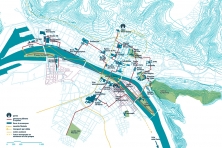

3. How did this issue and the questions raised by the site mutation meet?
The major event leading to the site transformation –a new TGV station within 15 to 20 years– obviously calls for a thought about the adaptability of the city planning. Can one seriously pretend to foresee today what activities will set up around this station so far off? And is it sensible to do so? In our point of view, the sound question is : what is to be done in the Saint-Sever site while waiting for the station, or rather not waiting for the station ? Otherwise, the former industrial nature of the site gives a great opportunity to think about large scale infrastructure ability to evolve, including the quai Anquetil viaduct.
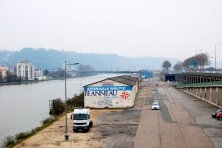
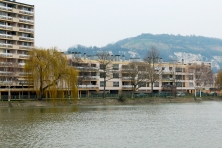
4. Have you already treated this issue previously and could you present some reference projects that inspired yours?
The concept of adaptability is fully integrated in our professional practice, both in architecture and urban planning, through projects that consider the future as “uncertain” and the quick evolution of paces of life. As references, the appropriation by the inhabitants of the Tempelhof former airport in Berlin, converted in a large public space, or the Coney Island reconversion project, based on a subtle work on ground floors. As new ways to design the city, we can although quote the Pop-up city (Golfstromen, NL), Ecosistema Urbano (ES), Paisajes Emergentes (CO), or Patrick Bouchain, with his participative constructions principles.
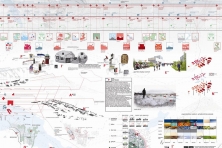
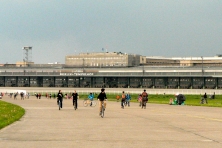
5. Today – within the era of an economic crisis and sustanibility – the urban-architectural project should reconsider its production method in time; how did you integrate this issue in your project?
By devising our project around a principle of chronology (used as a way of representation too), and by refusing a rigid design, considered as a final result. Furthermore, a unique picture hardly summarize our proposition, which is developed in several steps.
6. Is it the first time you have been awarded a prize at Europan? How could this help you in your prefessional career?
Indeed, it’s the first time we have won Europan. Besides an obvious reference recognised in Europe, this success is the completion of a common experience for our team and the beginning of prolific exchange views with the city of Rouen and the different operators of the project.